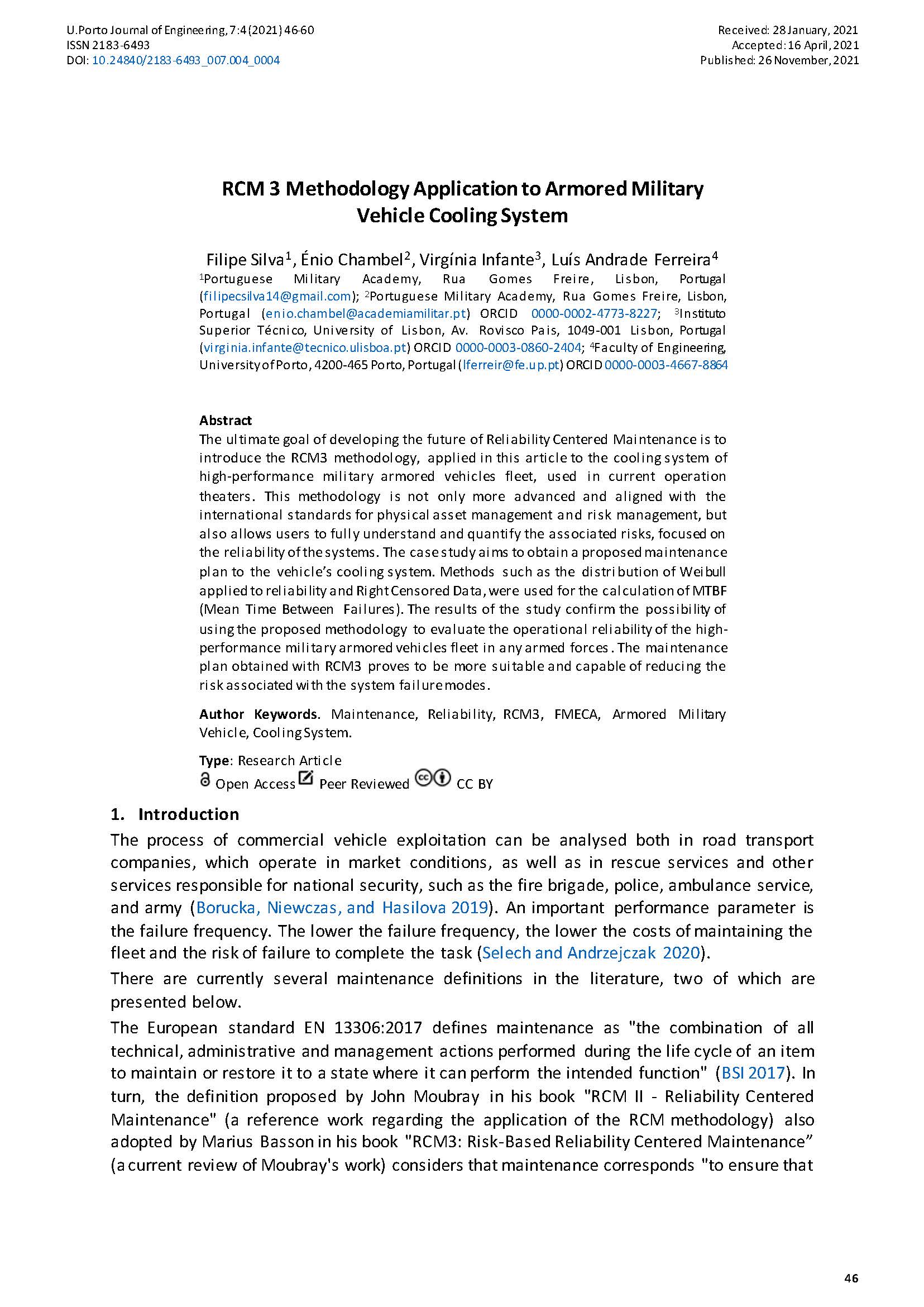RCM 3 Methodology Application to Armored Military Vehicle Cooling System
Main Article Content
Abstract
The ultimate goal of developing the future of Reliability Centered Maintenance is to introduce the RCM3 methodology, applied in this article to the cooling system of high-performance military armored vehicles fleet, used in current operation theaters. This methodology is not only more advanced and aligned with the international standards for physical asset management and risk management, but also allows users to fully understand and quantify the associated risks, focused on the reliability of the systems. The case study aims to obtain a proposed maintenance plan to the vehicle’s cooling system. Methods such as the distribution of Weibull applied to reliability and Right Censored Data, were used for the calculation of MTBF (Mean Time Between Failures). The results of the study confirm the possibility of using the proposed methodology to evaluate the operational reliability of the high-performance military armored vehicles fleet in any armed forces. The maintenance plan obtained with RCM3 proves to be more suitable and capable of reducing the risk associated with the system failure modes.
Downloads
Article Details

This work is licensed under a Creative Commons Attribution 4.0 International License.
Authors who publish with this journal agree to the following terms:
- Authors retain copyright and grant the journal right of first publication with the work simultaneously licensed under a Creative Commons Attribution License that allows others to share the work with an acknowledgement of the work's authorship and initial publication in this journal.
- Authors grant the journal the rights to provide the article in all forms and media so the article can be used on the latest technology even after publication and ensure its long-term preservation.
- Authors are able to enter into separate, additional contractual arrangements for the non-exclusive distribution of the journal's published version of the work (e.g., post it to an institutional repository or publish it in a book), with an acknowledgement of its initial publication in this journal.
- Authors are permitted and encouraged to post their work online (e.g., in institutional repositories or on their website) prior to and during the submission process, as it can lead to productive exchanges, as well as earlier and greater citation of published work (See The Effect of Open Access).

